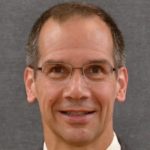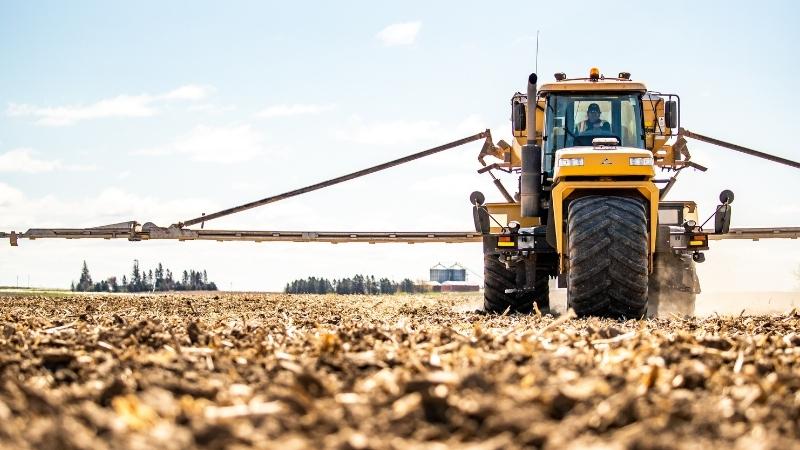Bridging Crop Nutrition Science And Technology
The future seemed to draw nearer for the 1,600-plus attendees of the co-located InfoAg and International Precision Agriculture conferences in St. Louis, MO, in early August. It’s a future where data plays an even bigger role in agriculture than it does today, especially in crop nutrition and its management. With the mixing of the traditional academic research community of the Precision Conference and the traditional industry community of InfoAg, there was an enhanced opportunity for the data of science and the data of practice to be bridged. That bridge is clearly under construction with more work needed to truly connect the two communities — a topic for expansion at another time.
Here we summarize the critical messages delivered by International Plant Nutrition Institute (IPNI) staff this year. Their presentations, along with others from the conferences, can be viewed at infoag.org/Program/Speakers.
N Fertilizer Decisions
The downside of the recent information explosion is that advisors and growers are becoming inundated with data to the point that it sometimes inhibits the decision-making process rather than enhancing it. A session led by Steve Phillips addressed how an already sound, science-based nitrogen (N) fertilizer management strategy can be enhanced by incorporating precision ag technologies. The session consisted of a three-part case study of a Virginia farm that tracked the N fertilizer decision making process from the scientific principles that underlie 4R nutrient stewardship, through the analytical processes and data management at the farm advisory level, to the on-farm decisions, evaluation, and adaptive management strategies employed by the grower.
The first point made was that the basic questions regarding N fertilizer management have been the same for centuries: What source do I apply, what rate do I apply, what time in the growing season do I apply it, and what placement method do I use? What has changed is our understanding that these questions must be answered simultaneously as source, rate, time, and place are not independent of one another. This fact results in a complex, site-specific recommendation; however, the framework of 4R Nutrient Stewardship allows us to make N fertilizer decisions that adhere to the science-based fundamentals that drive sound agronomic practices while incorporating all the technology and data-driven solutions that producers have access to.
Jim Wallace, Owner and Chief Consultant for Agritek, then discussed how the company uses multiple layers of on-farm soil and crop data to develop management zones for variable-rate seeding and N fertilizer applications. The grower was already changing N rates based on soil type, but grid sampling and multiple years of yield data identified variation within the soil zones that were able to be delineated. The more intensive data analyses also led to plant population changes within zones that affected yield potentials and subsequently N fertilizer recommendations. The result was a corn yield increase of nearly 30% over the two previous corn crops and even though N fertilizer rates increased, the yield boost was great enough to result in a higher N use efficiency.
Virginia Farmer Paul Davis then completed the session by discussing how a combination of university research and technology have enhanced his operation. In cooperation with researchers from Virginia Tech, Davis has conducted on farm trials to determine the biomass production and N uptake of various cover crops, which led to his incorporation of a vetch cover in front of his corn crop that he estimates saves him 70 to 80 pounds of N per acre in a good year. He has also made changes in his N timing and placement strategy based on university research and moved to a more intensive starter and in-season approach. He adopted the GreenSeeker technology in 2007, again based on research conducted on his farm, and has seen his N use efficiency increase by approximately 7%.
P Fertilizer Decisions
Today’s society demands more sustainable management of phosphorus (P). People want to know the full range of its impacts on their economic, environmental and social well-being. Decisions regarding the right source, rate, time and place of P application need to take all these impacts into account. Tom Bruulsema joined with Illinois crop producer and 4R Advocate Alan Madison and ag retailer Malcolm Stambaugh to communicate how partners can work together to optimize nutrient use efficiency and return on fertilizer investment with minimal adverse effects on the environment. The critical message was that 4R P fertilizer decisions made between ag retailers and producers positively impact water quality as well as yield and profit.
Soil Testing
Scott Murrell reported on the summary of soil fertility levels in North America that IPNI does every five years. The 2015 summary captured information on 7.5 million soil samples. Submissions from laboratories indicate that use of soil testing has increased substantially since 2010. The 2015 summary gives a more complete evaluation of the components of soil fertility than previous summaries, providing information about P, potassium (K), soil acidity (pH), magnesium (Mg), sulfur (S), zinc (Zn), and chloride (Cl- ). North American agriculture relies heavily on soil testing to assess soil fertility and guide future nutrient management decisions. This summary demonstrates the extreme variability of fertility levels, and that they do indeed change over time. Producers who have soils that have not been sampled recently have much to gain by getting into the regular practice of soil sampling. The increase in sample volume since 2005 and again since 2010 is a positive sign that more farmers and advisers are taking advantage of this valuable tool.
Suites Of 4R
Defining and monitoring progress in reaching goals has become a critical need for contemporary farms. Cliff Snyder reported on an IPNI-The Fertilizer Instutite-sponsored project aimed to improve the nitrous oxide (N2O) estimator in the Field to Market (The Alliance for Sustainable Agriculture) Fieldprint Calculator. The project’s aim is to better align the estimator with current U.S. N management science, and to make those emissions estimates more accurate for individual fields.
Instead of a single management practice or reliance on a reduced fertilizer N rate alone to achieve environmental and crop production goals improved suites of 4R N management are more likely to help farmers reach economic, social, and environmental sustainability goals. Examples of Intermediate and Advanced/Emerging 4R N management practices — which were unanimously agreed upon by leading national university and government N management and N2O scientists for major corn, soybean, and wheat production systems were illustrated. Anticipated reductions of N2O emissions were shown. According to current research, using improved suites of 4R N management can help protect and raise crop yields while lowering the net residual N balance (fertilizer and/or manure N input + legume N fixation — crop harvest N removal), and thereby reduce the loss of N2O-N to the atmosphere.
Precision agriculture professionals can play a significant role in advancing and documenting the implementation of suites of 4R N management. As more farmers enlist the assistance of such skilled professionals and crop advisers with implementation of site-specific suites of 4R N management, we can expect to get more of the applied N into the crop while simultaneously reducing the risks and amounts of N loss to the environment.








